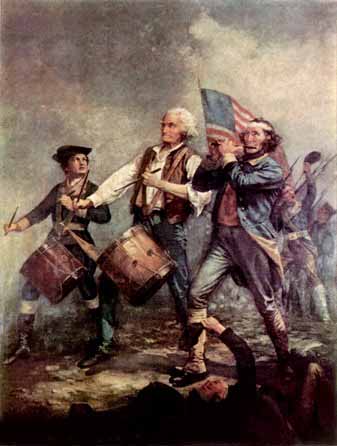American Independence Day
Part 2: The Reality of Independence Great Britain, however, was not so willing to let the colonies go.
The war dragged on, and some colonists began to wonder whether they really wanted independence. Many of the colonists were Loyalists, people who had stayed loyal to Britain. The more battles the British army won, the more opportunity the Loyalists had to gain members.
In the next few years, British successes were fewer. They won several great victories in North and South Carolina, but further battles resulted in little more than a draw. It was getting more and more difficult to send reinforcements all the way across the Atlantic Ocean, and the Americans were getting more and more determined to end the war in their favor. Finally, in 1781, General Charles Cornwallis, surrounded at Yorktown by the Americans on land and the French at sea, surrendered his sword and his army to George Washington. The fighting was over. The Treaty of Paris, signed two years later, granted lasting independence to the United States of America. The Revolutionary War had been fought and won to protect the independence asserted on July 4, 1776. The American people had won the right to govern themselves. Next page > The Legacy of Independence > Page 1, 2, 3 |
|
Social Studies for Kids
copyright 2002–2024
David White



 The
Declaration made the British all the more angry, and their
battlefield victories piled up. British generals pushed
American General
The
Declaration made the British all the more angry, and their
battlefield victories piled up. British generals pushed
American General  The
Americans fought on, though. In 1777, things began to
change. First and foremost was the American victory at
The
Americans fought on, though. In 1777, things began to
change. First and foremost was the American victory at

